Scientists have indicated that the close relatives of the giant tortoise, capable of carrying multiple people at once across this river, still exist on Earth today.
In the classic novel “Journey to the West”, during the journey to retrieve scriptures, when the monk Tang Seng and his three disciples reached the Tongtian River, they had no boat to cross, so they requested a giant tortoise for assistance. The tortoise then conveyed a message: when they reached the western heaven and met the Buddha, to ask him: “I have a question. I have been cultivating for one thousand three hundred years and still have not achieved the form of a human. Although I can speak and live long, I have not escaped my fate! Please ask the Buddha when I will become a human.”
Upon arriving at the scriptures, Tang Seng forgot this request, so when they returned across the Tongtian River and encountered the giant tortoise again, they asked him to carry them across. Midway through the river, the tortoise asked if Tang Seng had inquired about his transformation. Due to his forgetfulness, Tang Seng remained silent. Ultimately, the tortoise, in anger, tossed all four of them into the river. The scriptures got wet and were no longer intact. This incident was the 81st calamity that Tang Seng and his disciples had to overcome.
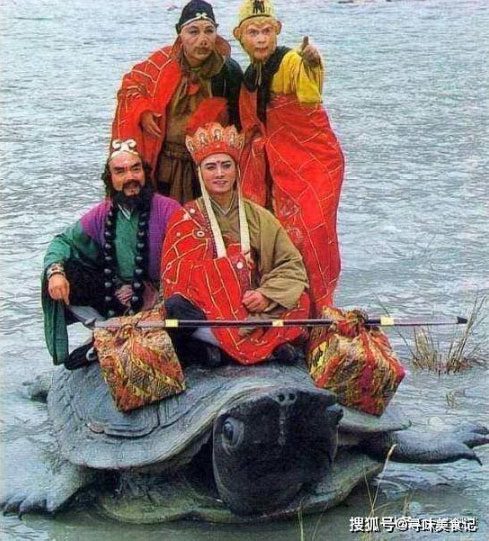
In “Journey to the West”, when Tang Seng and his three disciples crossed the Tongtian River, they asked a giant tortoise for assistance as there was no boat available. (Image: Sohu)
Many people are curious about whether this giant tortoise character originates from a mythical creature or is simply an animal. Most believe that Wu Cheng’en indeed had a brilliant creative mind when he crafted this classic work of Chinese literature. Although the tortoise in “Journey to the West” is merely a fictional character created by Wu Cheng’en, there indeed existed a species of tortoise capable of carrying multiple people on its back.
The Giant Tortoise Species
What species of tortoise could be that large? Is it a result of genetic mutation or some other reason? Why do we no longer see this species today?
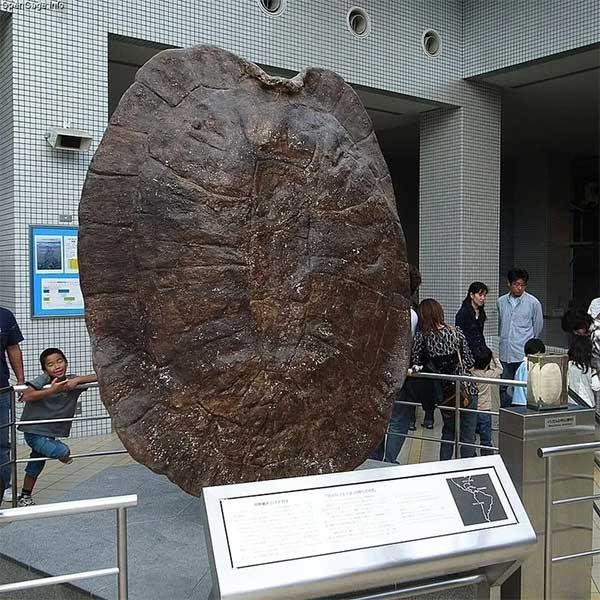
The fossil shell of Stupendemys geographicus. (Image: Sohu).
The giant tortoise we refer to here is the terrestrial tortoise scientifically named Stupendemys geographicus, where Stupendemys means “giant tortoise.” Unfortunately, Stupendemys geographicus is now extinct. It is a prehistoric genus of freshwater tortoises. Its fossils have been found in northern South America, in rocks dating from the Middle Miocene to the early Pliocene, around 13 to 5 million years ago. The fossilized shell of this tortoise is nearly 4 meters long, and it is estimated that its total body length could reach over 5 meters due to its very long neck and it weighed more than 5 tons. With such size, they could easily carry several people at once on their shell.
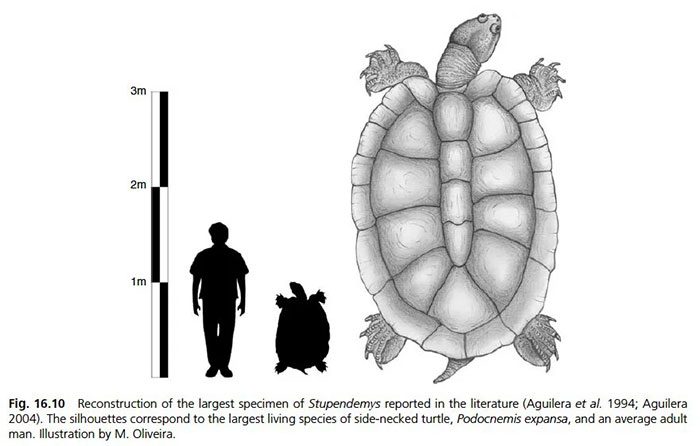
Size comparison of Stupendemys geographicus with modern tortoises and humans. (Image: Sohu).
The first fossils of this species were discovered in the 1970s and named in 1976. Most fossils have been found in Brazil, Colombia, Venezuela, and several other countries. Scientists have observed that Stupendemys geographicus previously lived in the northern part of South America.
Geological assessments of the layers where these fossils were found indicate that this giant tortoise typically lived in ponds and lakes within tropical rainforests or slow-moving rivers. They spent most of their time in water and primarily consumed vegetation.
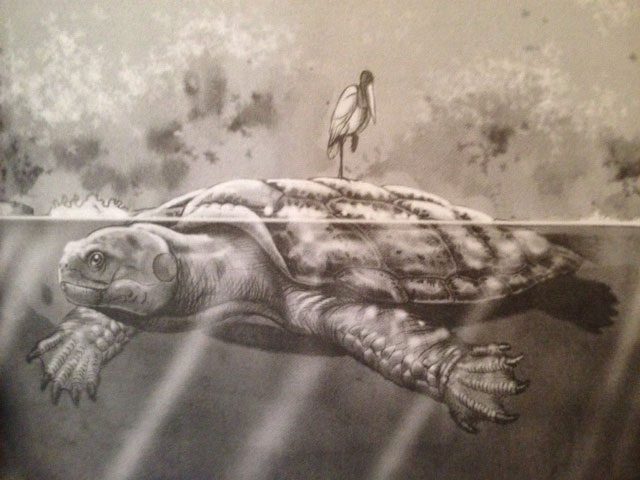
Most fossils of this tortoise species have been found in South America. (Image: Sohu).
Subsequently, Venezuelan paleontologist Rodolfo Sánchez and his team discovered a fossil of a giant terrestrial tortoise shell in Urumac, Venezuela, dating back approximately 8 million years. This fossil is nearly the most complete version of the terrestrial tortoise. Notably, in this fossil, they found some previously undiscovered features, including the long horned protrusions of this tortoise species. However, only the male individuals of the terrestrial tortoise possess this pair of long horns. These horns do not grow on the head but rather on the front of the body and on both sides of the neck. This is also a distinguishing feature of male terrestrial tortoises.
A Tortoise with Only One Natural Enemy
According to paleontologists, the large size of Stupendemys geographicus served as a defense mechanism against other predators. The pair of horns on their shell is also one of their weapons. The only natural enemy of Stupendemys geographicus is the Purussaurus crocodile. Purussaurus is an extinct genus of giant caiman that lived in South America during the Miocene epoch, from Colhuehuapian to Montehermosan in the SALMA classification.
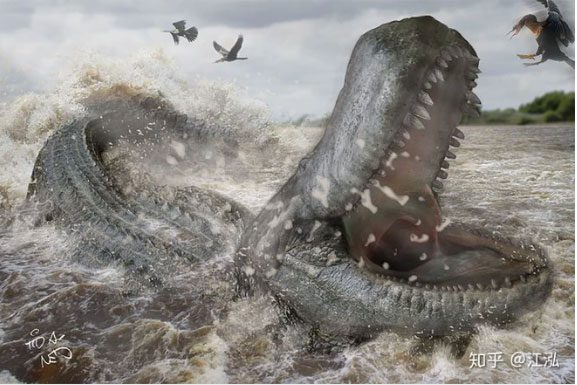
The only natural enemy of Stupendemys geographicus is the Purussaurus crocodile.
Scientists concluded this because on the fossil samples of the terrestrial tortoise, they only found bite marks from the Purussaurus crocodile. Only the biting force of the Purussaurus could break through the incredibly strong shell of Stupendemys geographicus.
To date, Stupendemys geographicus is still recognized by scientists as the largest tortoise species ever discovered by humans.
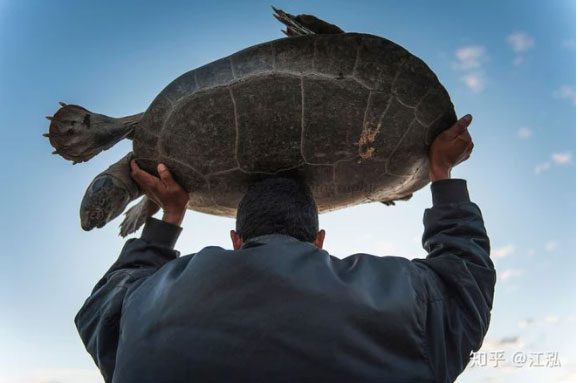
The closest relative of Stupendemys geographicus is the Podocnemis expansa. (Image: Sohu).
From the fossil samples of Stupendemys geographicus, archaeologists have found numerous gene markers related to various tortoise species currently living in the Amazon. The closest relative of Stupendemys geographicus is the Podocnemis expansa, which lives in a vast wetland system in South America. The Podocnemis species has a body length of about 1 meter and an average weight of around 90 kg.




















































